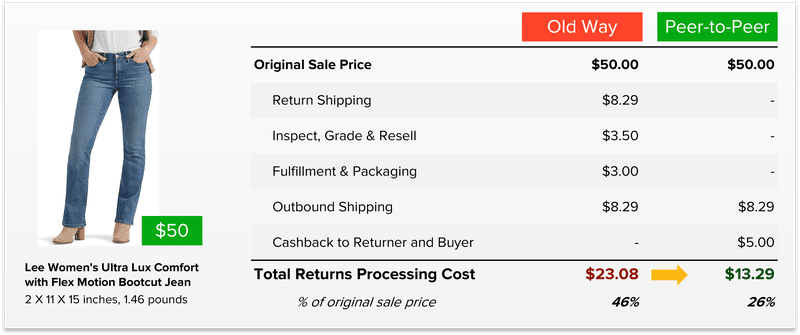Shopify vs Amazon: Which Ecommerce Platform Suits Your Business Best?

Last updated on March 20, 2025

In this article
 13 minutes
13 minutes
- Understanding Amazon FBA Prep Service Requirements
- What Are FBA Prep Services?
- The Benefits of Using FBA Prep Services
- Common Services Offered by FBA Prep Companies
- How to Choose the Right FBA Prep Service
- Understanding Amazon FBA Prep Services Pricing
- Top Amazon FBA Prep Centers for Ecommerce Fulfillment
- Amazon FBA Fulfillment Costs and Strategies
- Setting Up Your FBA Prep Service Relationship
- Potential Challenges and Solutions
- Conclusion
- Frequently Asked Questions
Deciding between Shopify vs Amazon for your ecommerce business? Shopify lets you create a custom online store, while Amazon provides instant access to millions of customers. This article will compare their differences, costs, and benefits of each to help you choose the right platform in the Shopify vs Amazon debate.
Key Takeaways
- Shopify offers greater customization and branding options, allowing you to create a unique online store, while Amazon is a marketplace with a uniform design that limits individual branding.
- Setting up a store on Shopify involves a guided process, making it beginner-friendly, whereas Amazon allows quicker product listing but requires strict adherence to selling standards.
- Shopify has a more flexible pricing model without transaction fees on its payment system, while Amazon imposes referral fees that can eat into Seller profits; understanding these costs is key to choosing the right platform.
Key Differences Between Shopify and Amazon
When it comes to selling products online, both Amazon and Shopify are giants in their own right, but they serve different purposes. Shopify is an ecommerce platform that allows you to sell online and create your own online stores, providing a blank canvas for your brand. In contrast, Amazon is a vast online marketplace where multiple Sellers list their products, akin to owning a stand at a busy market. In the debate of Shopify vs Amazon, each platform has its unique strengths.
Listing products on Amazon can be a bit more cumbersome as it requires Sellers to provide documentation for account approval, which can delay the setup process. On the other hand, Shopify offers more freedom in entering product information, making it easier to get your shop up and running quickly.
Customization is another area where Shopify shines. Amazon’s layout significantly influences a merchant’s store page design, limiting how much you can personalize your shop. Shopify, however, allows for extensive branding and customization options, letting you create a cohesive brand experience that stands out. Whether you’re a small business or a larger enterprise, Shopify provides the tools to build a unique online presence.
New Amazon merchants often face challenges such as strict requirements for product descriptions and listings, which can be daunting. In contrast, Shopify offers a more flexible and supportive environment, making it a preferred choice for many online Sellers.
Ease of Setting Up Your Online Store
Setting up an online store should be as straightforward as possible, and both Shopify and Amazon offer different experiences in this regard. Shopify’s setup process includes a comprehensive 8-step guide, ensuring users receive support while customizing their online store. This guide, combined with Shopify’s user-friendly tools like the AI assistant for writing product descriptions and the drag-and-drop website builder, makes it an excellent choice for individuals without technical skills.
Amazon allows users to start listing products almost immediately after creating an account, streamlining the process significantly compared to Shopify. This immediate access to a huge customer base can be a major advantage for Sellers looking to start selling online quickly. However, selling on Amazon resembles operating a booth in a crowded market, whereas Shopify allows you to create your own branded online storefront.
Shopify’s pricing structure allows selling an unlimited number of products without incurring additional listing fees, making it a cost-effective option for growing businesses. Whether you want to build your own online store with customizable templates or leverage Amazon’s vast marketplace, understanding these differences can help you choose the best platform for your business.
Branding and Customization Options
Branding is crucial for any business, and this is where Shopify truly excels. Shopify offers extensive brand customization, allowing you to create a unique and cohesive brand experience. From customizable themes to HTML/CSS modifications, Shopify provides the tools to personalize every aspect of your online store. This means you can build your very own brand and customer experience that stands out in the crowded ecommerce space.
In contrast, Amazon’s marketplace design emphasizes uniformity, limiting individual Seller branding opportunities. While this can ensure a consistent shopping experience for customers, it restricts Sellers from fully expressing their brand identity. Selling on Shopify allows for complete ownership of your own store, providing more control over branding and pricing.
With Shopify, Sellers can build direct relationships with customers, gaining valuable information like names and emails that can be used for personalized marketing efforts. For businesses aiming to establish a strong brand presence, Shopify’s customizable templates and extensive branding tools are a major benefit. This flexibility allows you to tailor the customer experience to align with your brand values and goals.
Marketing Tools and Capabilities
Effective marketing is the key to driving traffic and sales, and Shopify and Amazon offer different ecommerce tools to help Sellers reach prospective customers. Shopify users can utilize a variety of marketing and SEO tools to enhance the visibility of their own website. From targeted advertising campaigns on platforms like Meta and Google to email marketing and marketing automation tools, Shopify provides a comprehensive suite of tools to help you grow your business online.
Shopify’s SEO tools guide users on improving their search engine rankings, aiding in better visibility for their online stores. Additionally, Shopify allows users to run targeted advertising campaigns across various platforms, only charging when conversions occur. This means you can reach your prospective customers more effectively and maximize your marketing budget.
Amazon Sellers must optimize for the Amazon search engine specifically, which requires a different approach to SEO. While Amazon provides immediate access to a wide range of customers, it also means Sellers need to invest in promotions to ensure visibility.
Shopify, on the other hand, requires more active marketing efforts since it does not benefit from the same built-in traffic that Amazon has. This means businesses on Shopify need to be more proactive in their marketing strategies to drive traffic and sales.
Pricing and Fees Comparison
Understanding the pricing and fees associated with each platform is essential for making an informed decision. Different types of fees to consider when comparing Amazon and Shopify include subscription fees, transaction fees, referral fees, and fulfillment fees.
Let’s break down these fees to see how each platform stacks up.
Subscription Fees
Shopify offers four main plans: Basic Shopify at $29 per month, Shopify at $79 per month, Advanced Shopify at $299 per month, and an enterprise plan for more complex businesses called Shopify Plus, starting at $2,300 per month for 36 months. These plans cater to businesses of varying sizes, providing flexibility and scalability as your business grows. The Basic Shopify plan is perfect for new and small businesses, while the Advanced Shopify plan offers more advanced features for larger enterprises.
Amazon, on the other hand, offers a simpler pricing structure with two plans. The Individual plan is suitable for casual Sellers who don’t need advanced features, ($0.99 per item sold, separate from other fees), while the Professional plan is recommended for business owners or professional retailers ($39.99 per month). This straightforward approach can be easier for Sellers to navigate but may not provide the same level of flexibility as Shopify’s tiered pricing plans.
Transaction and Referral Fees
One of Shopify’s significant advantages is that it does not impose transaction fees when users utilize Shopify Payments; you only pay the credit card rate, which covers the cost of processing the payment. This means Sellers can keep nearly all their profits without worrying about additional costs per transaction.
Amazon’s referral fees vary by product category and can range from 6% to as high as 45% depending on the item sold, but the most common by far is 15%. Shopify does not impose referral fees, which can lead to higher profits for sellers.
Additionally, Amazon charges a per-item fee for Sellers on the Individual plan, while Shopify allows unlimited products without additional listing fees. This can lead to substantial savings for Sellers using Shopify, making it a more cost-effective option in the long run.
Fulfillment Fees
Using Amazon FBA incurs various fulfillment fees based on the size and weight of the products, which can significantly impact overall expenses. These fees include storage and handling fees, which can add up quickly, especially for larger or heavier items.
Shopify, on the other hand, allows Sellers to manage shipping with customizable rates, weights, rules, and options to connect with third-party fulfillment services. This flexibility can help Sellers optimize their shipping process and reduce costs.
Shipping and Fulfillment Options
Shipping and fulfillment are central to any ecommerce business. Amazon FBA offers Sellers the advantage of leveraging Amazon’s extensive logistics network for handling inventory and shipping. This means businesses can benefit from Amazon’s fast and reliable shipping options, enhancing the customer experience.
Shopify provides users the flexibility to integrate with various order management systems and third-party logistics (3PL) providers for efficient fulfillment operations. Sellers on Shopify can set up shipping rates based on weight, destination, and specific conditions to customize their shipping process.
Additionally, integrating Shopify with Amazon Multi-Channel Fulfillment (MCF) can enhance the speed of order fulfillment, allowing customers to receive their orders more quickly. Shopify Buy with Prime is also an MCF solution, but adds a special buy button to Shopify checkout pages to allow customers to choose FBA fulfillment rather than Sellers deciding for them. These integrations can reduce manual labor by outsourcing the processing of customer orders and while optimizing logistics.
Payment Options
Payment options are a fundamental part of the ecommerce experience. Shopify Payments allows users to accept payments directly through their store without additional fees for credit card processing. This integrated payment gateway simplifies the checkout process and can improve conversion rates. Moreover, Shopify users can also integrate third-party payment processors, offering more flexibility in payment acceptance, and the Shop Pay app enables a quick 1-click checkout experience for shoppers.
Amazon supports various payment methods, including gift cards, bank account transfers, and mobile payments. The primary payment gateway for Amazon is Amazon Pay, which provides a seamless and secure payment experience for customers.
While both platforms offer robust payment options, Shopify’s flexibility and lack of additional fees make it a more attractive choice for many Sellers.
SEO and Organic Sales
SEO is crucial for enhancing online visibility and reaching potential customers in ecommerce. Optimizing product pages effectively can significantly improve a Shopify store’s visibility in search results, attracting more customers. Content marketing through blogging can further increase organic traffic, helping to establish authority and relevance in your category.
Sales on Amazon often require continuous promotion, as organic visibility is not guaranteed. This means Sellers need to invest in Amazon SEO and other promotional strategies to maintain a competitive edge.
While Shopify requires more active marketing efforts, the potential for building long-term organic sales through effective SEO and content marketing can be highly rewarding.
Integrating Amazon with Shopify
Integrating Amazon with Shopify can expand your reach and enhance your sales opportunities. This integration allows you to synchronize inventory and product information between Shopify and Amazon, streamlining the management of your online store. The process can involve using a built-in Amazon app, third-party applications, or custom APIs depending on your business needs.
Once integrated, users can create Amazon offers and listings directly from their Shopify store. Onboarding for integration can vary in time, with simpler setups taking as little as 15-30 minutes. This synergy between the two platforms can significantly enhance your ecommerce results, offering the best of both worlds.
Pros and Cons of Selling on Both Platforms
Selling on both Shopify and Amazon can allow businesses to maximize their reach and conversions. Amazon provides immediate access to a wide range of customers, which is crucial for driving sales. However, competition on Amazon is intense, requiring Sellers to invest in promotions to ensure visibility to sell products.
With over 1.75 million merchants using Shopify, businesses can avoid referral fees by using this platform, offering better marketing flexibility and control. Amazon’s strict policies can lead to account bans if compliance is not maintained, adding an element of risk for Sellers. ReSellers doing wholesale or retail arbitrage may find Amazon more suitable due to its vast marketplace.
A successful online business ecommerce platform presence should ideally include both an official website and a presence on platforms like Amazon for maximum impact. Balancing the strengths of both platforms can help businesses achieve their sales and branding goals more effectively by creating their own ecommerce website.
Beyond the Basics
Beyond the basics, both Shopify and Amazon offer unique features that can enhance your ecommerce experience. Shopify Capital provides merchant cash advances and loans to eligible store owners, a financial service many people don’t associate with the platform.
Amazon’s A9 Algorithm, which differs significantly from Google’s algorithm, plays a crucial role in how products are ranked on the site. Understanding these unique features can help you leverage each platform’s full potential.
Summary
Both Shopify and Amazon offer powerful tools for selling products online, but they cater to different needs and business models. Shopify provides extensive branding and customization options, making it ideal for businesses looking to build a unique online presence. Its flexible pricing plans and lack of transaction fees further enhance its appeal. Amazon, with its vast marketplace and immediate access to millions of customers, is perfect for Sellers looking to reach a large audience quickly.
Ultimately, the choice between Shopify and Amazon depends on your business goals and needs. For many Sellers, using both platforms can be the best strategy, combining the strengths of each to maximize reach and sales. By understanding the key differences and benefits of each platform, you can make an informed decision that sets your business up for success.
Frequently Asked Questions
Can I use both Shopify and Amazon to sell my products?
Absolutely, you can use both Shopify and Amazon to sell your products! By integrating them, you can sync your inventory and easily manage listings, giving your business the best of both worlds.
What are the main differences between Shopify and Amazon?
The main difference is that Shopify lets you build a customized online store where you control branding and customer relationships, while Amazon is a vast marketplace where many Sellers can reach a large audience, but have very little control. So, choose Shopify for brand control or Amazon for quick access to customers.
How do the fees compare between Shopify and Amazon?
Shopify generally offers more predictable and lower fees, especially if you use Shopify Payments and avoid additional transaction fees. In contrast, Amazon has varying referral fees by product category and additional fulfillment costs with FBA.
Which platform is easier to set up for a new business?
Shopify is generally easier to set up for a new business because it offers a comprehensive setup guide and user-friendly tools, perfect for those without technical skills. However, Amazon allows for immediate product listing, giving Sellers a quick start if speed is a priority.
What are the advantages of integrating Shopify with Amazon?
Integrating Shopify with Amazon expands your reach and boosts sales by synchronizing inventory and product information. This means you can easily manage your listings and improve your visibility across both platforms.

Up to 64% Lower Returns Processing Cost


